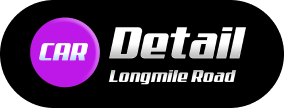Best Work Order Software 2026: Why Orderry Is The Top Choice For SMEs
Many SMEs struggle to find a suitable solution for work order management that meets their requirements and enhances business processes. The stakes are high, as a poorly chosen program can lead to wasted resources, inefficiency, and missed business opportunities. Continue reading to explore popular solutions compared to Orderry to help you find the best work order software for your small business.
Table of Contents:
Factors to Consider When Choosing the Best Work Order Software
Comparison of the Best Work Order Software for Small Business in 2026
What is The Best Work Order Software for Small Businesses: On-Premise or Cloud?
Features to Focus on When Comparing Orderry with Other Systems
How to Recognize Poor Software Solutions
Options abound in work order management solutions, making selecting the right one for your small or medium-sized enterprise (SME) challenging. With so many factors to consider, including features, usability, and cost-effectiveness, making an informed decision that aligns with your business needs is crucial. With this work order software comparison, you can quickly analyze available solutions and why Orderry stands out as the top choice for businesses looking to streamline their operations, boost customer satisfaction, and drive growth.
Factors to Consider When Choosing the Best Work Order Management Software
When choosing work order management software, review your business needs, scalability, user-friendliness, integration capabilities, customer support and training options, cost and pricing structure, and analytics features to streamline operations effectively.
Scalability
To assess scalability, consider the size of your business and how many users will be utilizing the system. Ensure the solution can handle your current workload and growth projections. Evaluate whether it can integrate with other software systems and adapt to changes in your business processes. Also, check if the tool offers customizable features to meet your needs. Finally, look into the available customer support to ensure smooth implementation and ongoing support as your business scales.
Pro Tip: Take advantage of free trials and demo presentations to test out different options before making a final decision.
Orderry is your ultimate work order software, as you can be sure it will accommodate your shop’s growth. With its scalable features and flexible functionality, Orderry can adapt to meet your changing needs, whether you have one location or multiple branches, one employee or a team of up to 1500 persons. Its robust system can handle increased transactions, customer data, and inventory without sacrificing performance. Additionally, Orderry offers advanced reporting and analytics tools to help you make informed decisions as your business grows.
Orderry is equipped to support your business's growth and evolution. Book a short demo to watch it in action.
Customer Support and Training Options
A reliable software provider should offer various customer support and training options to ensure business owners and their employees can effectively use the system. This can include 24/7 customer support via phone, email, or live chat to promptly address any issues or concerns. The tool should also provide comprehensive training resources such as video tutorials, webinars, and user guides to help users navigate it and maximize its features. Offering personalized training sessions for shop owners and their teams may also benefit businesses with specific needs or preferences. Orderry prioritizes customer support and training to ensure users have the necessary resources to succeed, including personal onboarding manager’s assistance, an extensive Help Center with video tutorials and step-by-step guides, a 24/7 chatbot, and dedicated customer support over the phone, email, and chat.

Pro Tip: Setting up a new solution can be challenging, especially when you want to automate all business areas. To speed up the process, request account configuration assistance.
Implementation Time
The time it takes to implement a new work order management system for a repair shop can vary depending on its size, the complexity of the system, and the level of customization required. On average, a small business can take a few days to several months to implement a new solution. Factors such as data migration, staff training, system testing, and integration with existing tools can all affect the timeline of the implementation process. It is important to carefully plan and strategize the implementation process to ensure a smooth transition and successful adoption of the best work order software you’ve chosen for your shop.
When we implemented Orderry, it took our technicians three days to move along with the new software. And that's it. The training was over. They got it really quickly, and everything was running smoothly in the first week.
User-Friendliness
When evaluating software for your repair shop, an intuitive interface and ease of navigation within the work order management system are crucial. A user-friendly platform should have a clean layout that makes it easy for employees to locate information and perform tasks efficiently. Testing the solution with a small group of employees can provide valuable feedback on its usability and effectiveness in daily operations. When trialing Orderry, you can invite three members of your team to join your trial account free of charge.

Give Orderry a test drive with your team on board — 3 employee accounts are included. Sign up for a free trial today.
Customization Options
By tailoring the solution to align with your shop's specific needs and workflow, you can greatly increase the efficiency and productivity of your team. Explore how to customize work order software to fit how you organize work in your shop — what status sequences you can create, what fields you can add to forms and documents, etc. Although repair processes seem similar at their core, every business has unique workflows that the system should reflect. Moreover, when your employees enter only essential data and clearly understand the logic of each action, they process work orders faster.
Orderry offers a high level of customization that can easily meet the requirements of various repair shop types. Whether changing the layout, adding new fields, or integrating with other tools, Orderry provides simple-to-implement customization options. To make the process even smoother for users, Orderry's support team is readily available to assist with any customization needs.
Orderry is incredibly intuitive. If you're used to using any kind of database, it is very familiar. And the fact that I can modify the program so easily makes a huge difference to me because that's what I want. I'm not a cookie-cutter business. Guitar repair is not typical. And that's why Orderry is so good for businesses like mine.
Comparison of the Best Work Order Software for Small Business in 2026
Orderry vs. RepairShopr

RepairShopr is a cloud-based platform for repair shops and service-based businesses to manage their operations. It provides tools for customer relationship management, ticketing systems, inventory management, invoicing, and reporting. RepairShopr also integrates with accounting software, payment processors, and other third-party tools to streamline business processes. RepairShopr aims to help businesses in the repair industry manage their operations effectively and grow.
Orderry is better for small businesses compared to RepairShopr because of its easy-to-use interface, customizable features, and cost-effective pricing plans. Small businesses often need a user-friendly platform tailored to their specific needs without breaking the bank. Orderry offers a more intuitive system that can be easily navigated by users of all skill levels while also providing the flexibility to adapt to the unique requirements of a small business. Orderry's pricing plans are more affordable for small businesses looking to manage their operations efficiently without overspending on software.
Orderry vs. RepairDesk
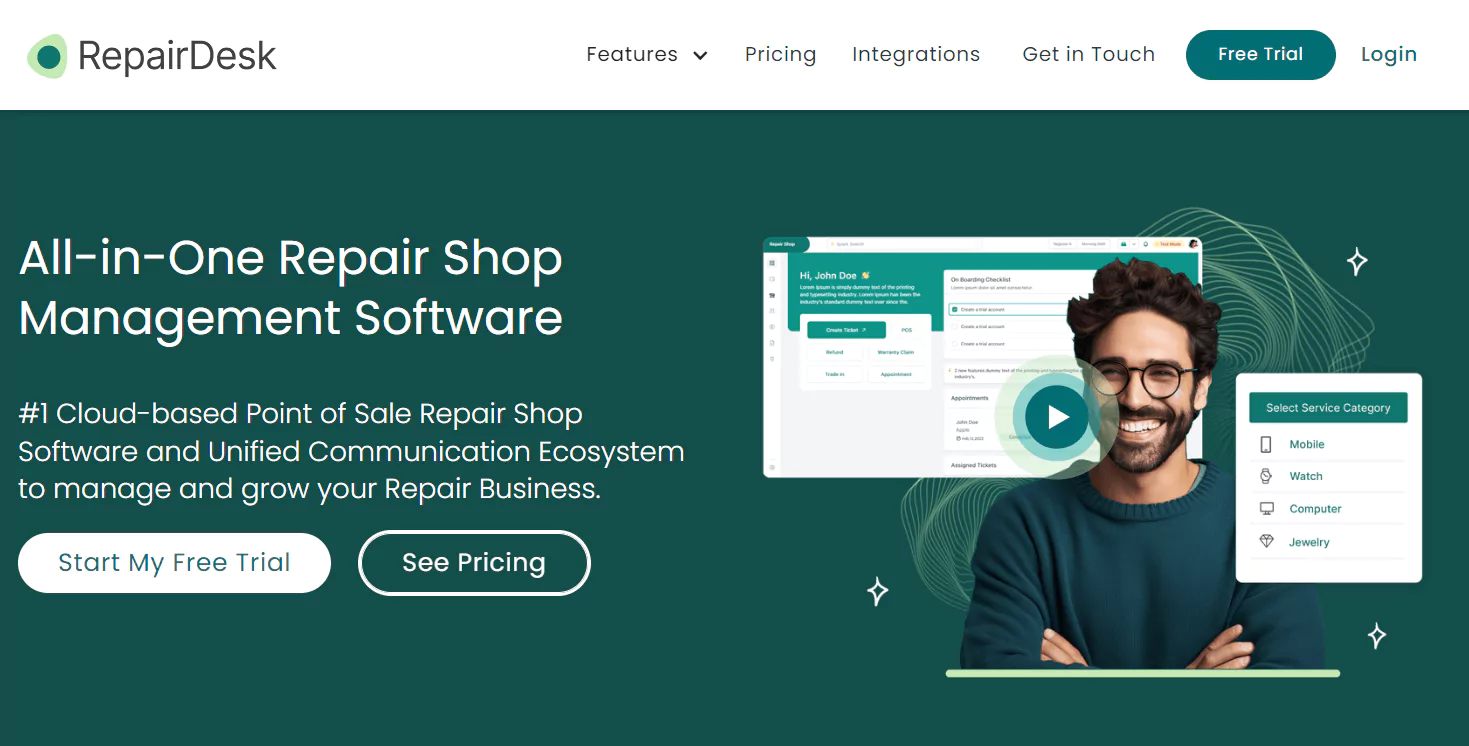
RepairDesk is a cloud-based point-of-sale business management solution for repair shops and service businesses. It helps streamline operations, manage inventory, track repairs, generate invoices, and communicate with customers. With features like ticketing, appointment scheduling, and reporting, RepairDesk aims to make running a repair business more efficient. RepairDesk helps businesses in the repair industry streamline their operations and provide better customer service. However, compared to Orderry, RepairDesk is more tailored towards larger businesses, lacking the customization and flexibility needed for small businesses to thrive.
Orderry vs. Shopmonkey

Shopmonkey is a cloud-based automotive shop management solution designed to help automotive shops streamline their day-to-day operations. It offers features like appointment scheduling, inventory management, customer relationship management, and invoicing. Shopmonkey also integrates with other tools commonly used in the automotive industry, making it a comprehensive solution for shop owners. Shopmonkey helps automotive shops automate processes, save time, and improve their bottom line. However, Orderry offers a more cost-effective solution for small businesses like independent mechanics or just-starting out shops, allowing them to access essential shop management features while saving their budget.
What is The Best Work Order Software for Small Businesses: On-Premise or Cloud?
The key factors to consider when deciding between cloud and on-premise solutions include:
- Scalability and flexibility. Cloud platforms offer more flexibility and scalability, allowing small businesses to easily adjust their system as their needs change.
- Cost considerations. An online work order system is typically more cost-effective for small businesses since they only pay for the services they use on a subscription basis, avoiding large upfront costs.
- Mobility. Cloud software offers greater accessibility since users can access the system from any device with an internet connection, promoting collaboration and remote work.
- Support and maintenance options. Cloud software providers often offer regular updates and maintenance, ensuring small businesses can access the latest features and security measures without investing in an IT team.
- Security considerations. On-premise solutions give the company more control over its data, as it is stored locally on company servers. However, this also means the company is responsible for maintaining and securing the data. On the other hand, cloud software stores data on third-party servers, which may raise concerns about data security and privacy.
Pro Tip: For your peace of mind, ensure that the cloud software provider you’ve chosen has robust security measures in place, such as data encryption, regular security audits, and compliance with industry security standards.
Before using Orderry, we did not have a system in place. Due to our high volume, more than Excel or paper was needed to manage our operations.
Features to Focus on When Comparing Orderry with Other Systems
Orderry offers industry-specific customization options
When signing up for software for service business, you can select a company template for your particular industry with pre-set lists of services, brand catalogs, vehicle/device/appliance models, common breakages, and document templates.
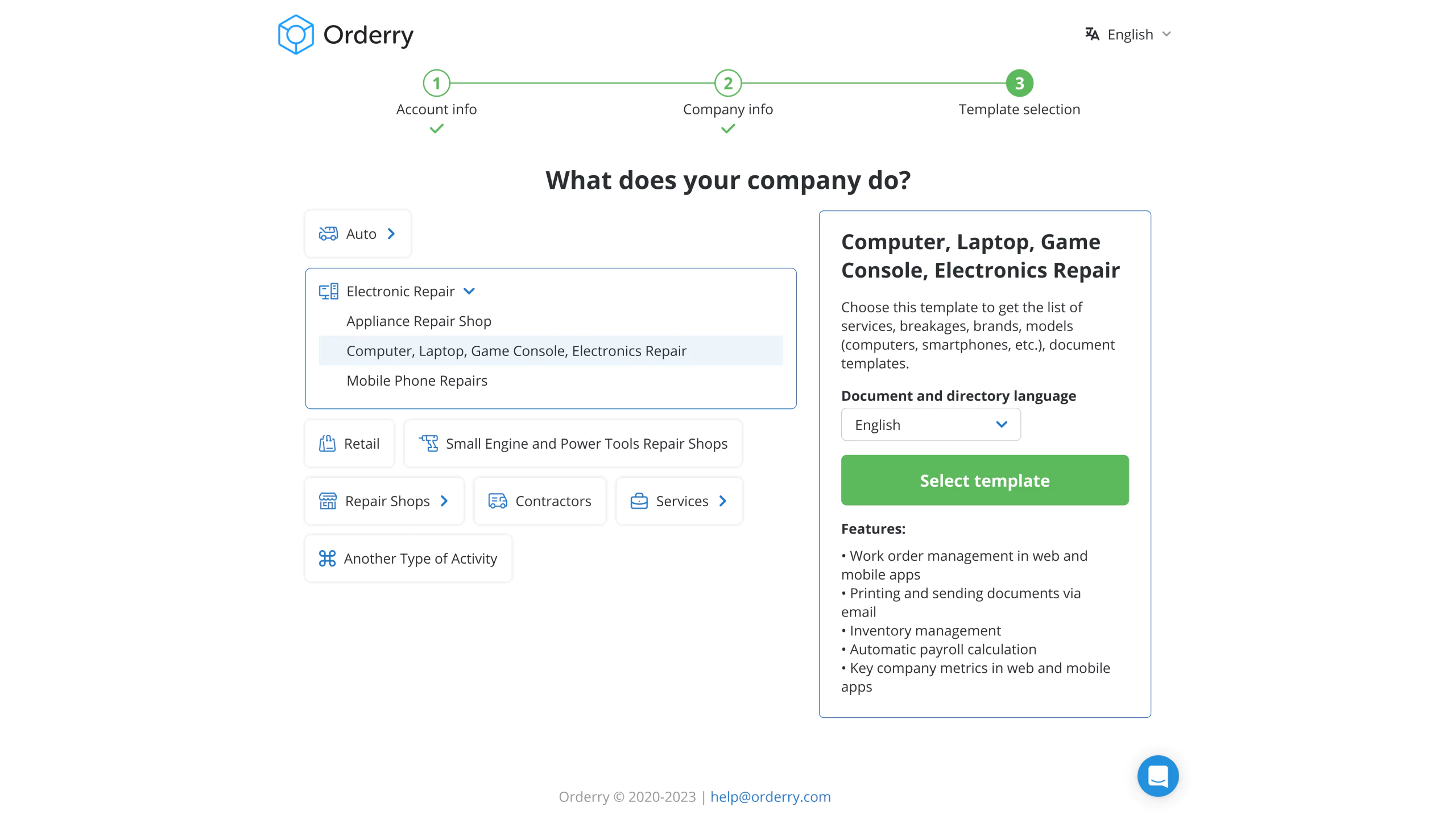 Registration Steps in Orderry
Registration Steps in Orderry
Orderry lets you enhance client relationships
Easily track customer interactions from various channels, manage customer contacts, analyze marketing campaigns, and automate sending notifications and collecting customer reviews.
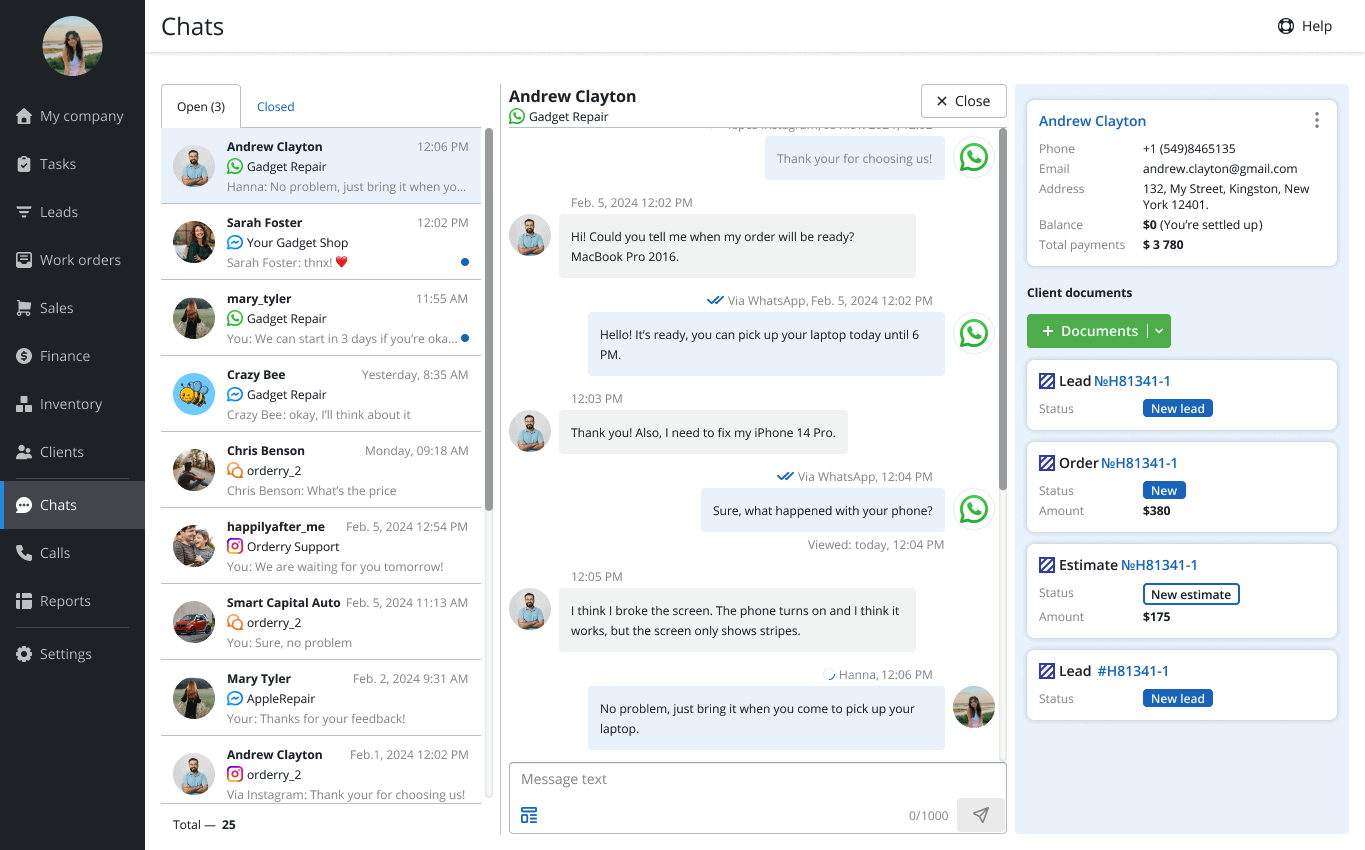 Customer communication in Orderry
Customer communication in Orderry
Orderry provides full-cycle work order management features
You can streamline the work order process at every workflow stage and easily generate labor and materials cost estimates for a job with quick conversion to work orders. Default work order types and status sequences are available for different locations. The software includes an event feed with a history of works performed, team members involved, parts used, and payments received.
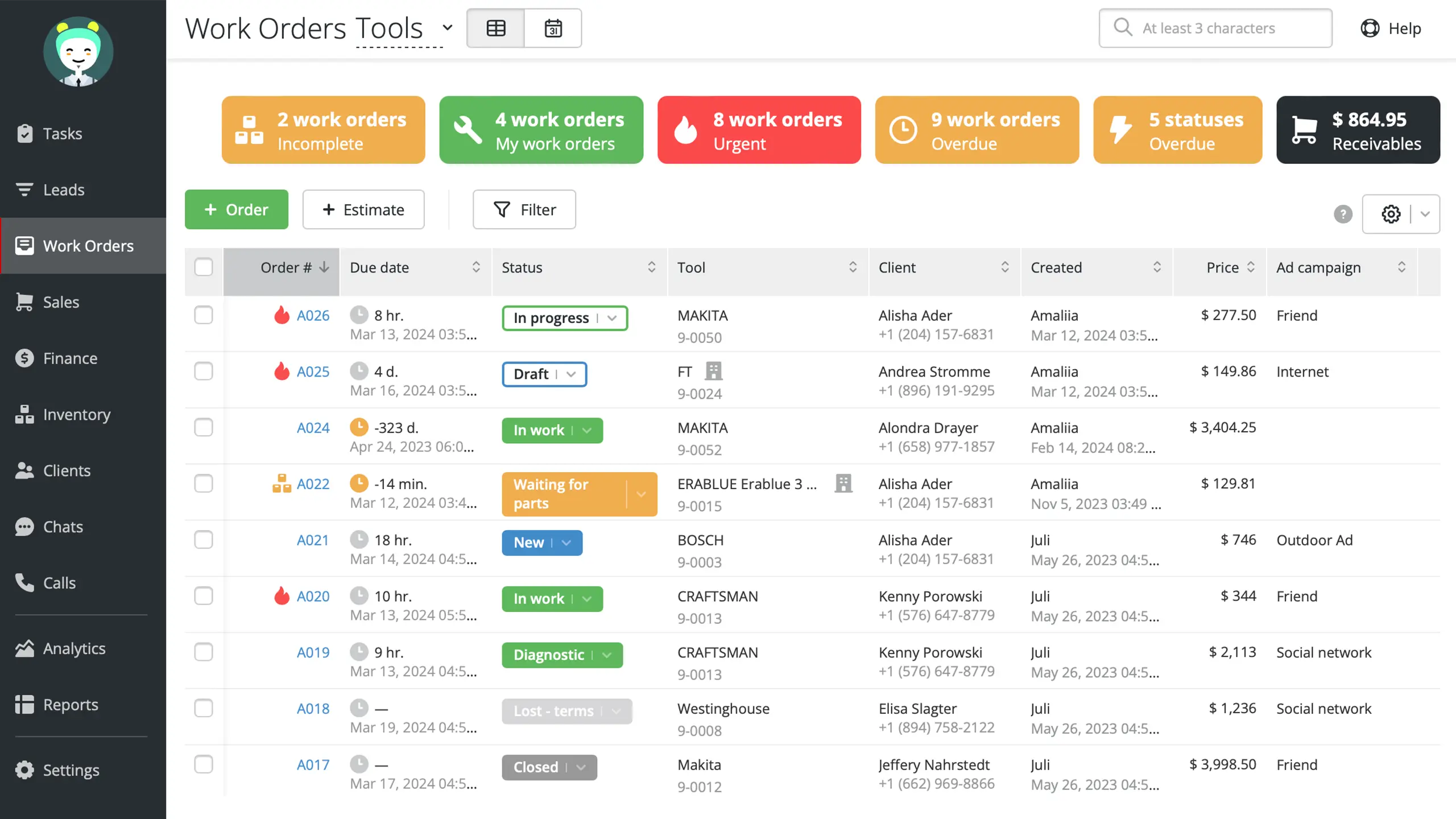 Work Order Table in Orderry
Work Order Table in Orderry
Orderry allows you to move from estimates to payments with zero friction
With a focus on workflow automation, Orderry simplifies managing work orders and estimates. It allows for easy online estimates, public forms for client approvals, and seamless e-signature capabilities. You can also automate conversions and collect payments effortlessly via Stripe, along with real-time post-payment status updates. Elevate your business management with Orderry and provide an unparalleled service experience to your clients.
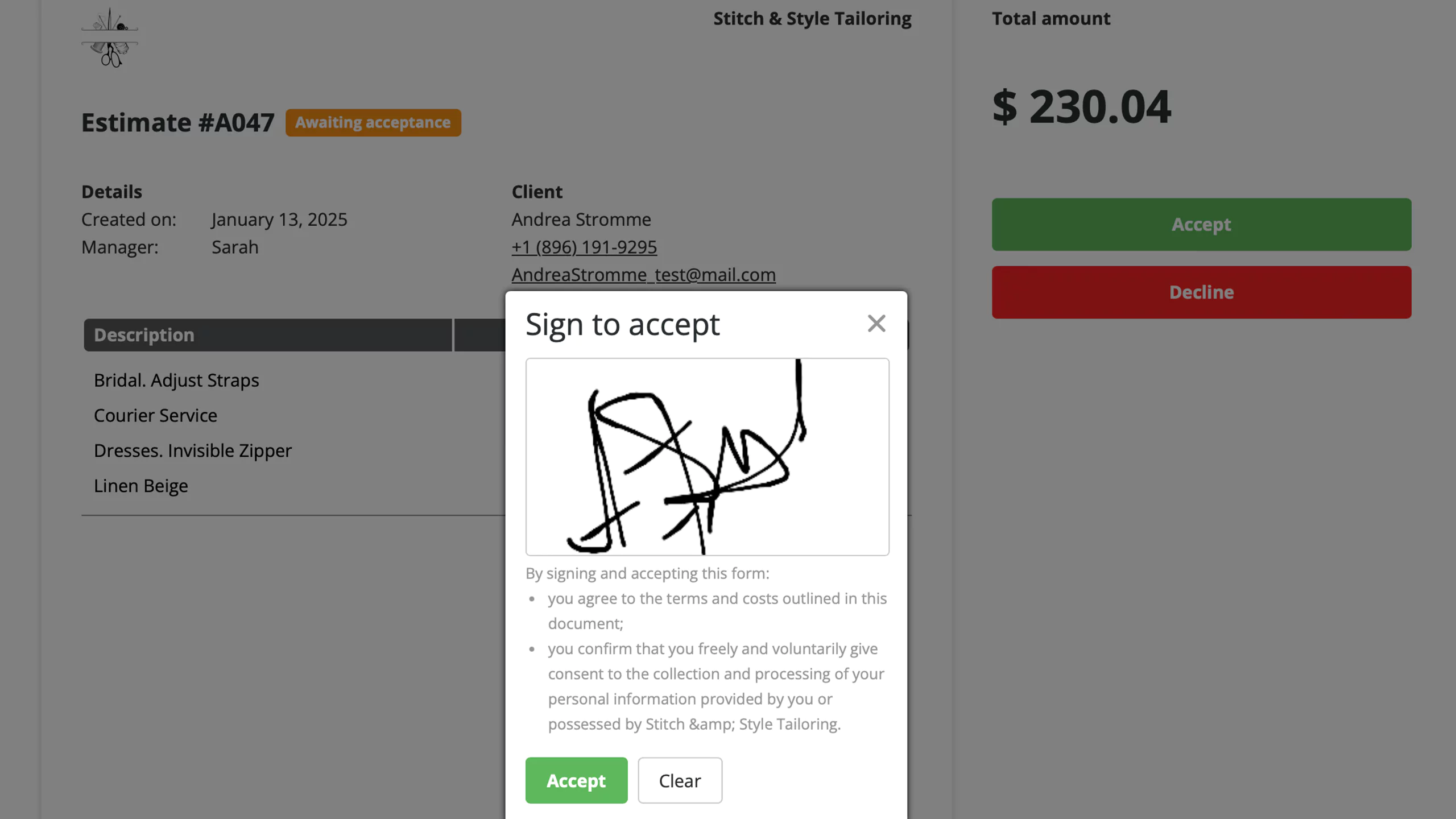 Client approvals with E-Signature
Client approvals with E-Signature
Orderry offers robust inventory management capabilities
Efficiently manage goods and assets by creating digital warehouses. Easily perform transfers, postings, and stocktaking with a few clicks. Analyze your stock, adjust pricing and eliminate unprofitable items to optimize your business operations.
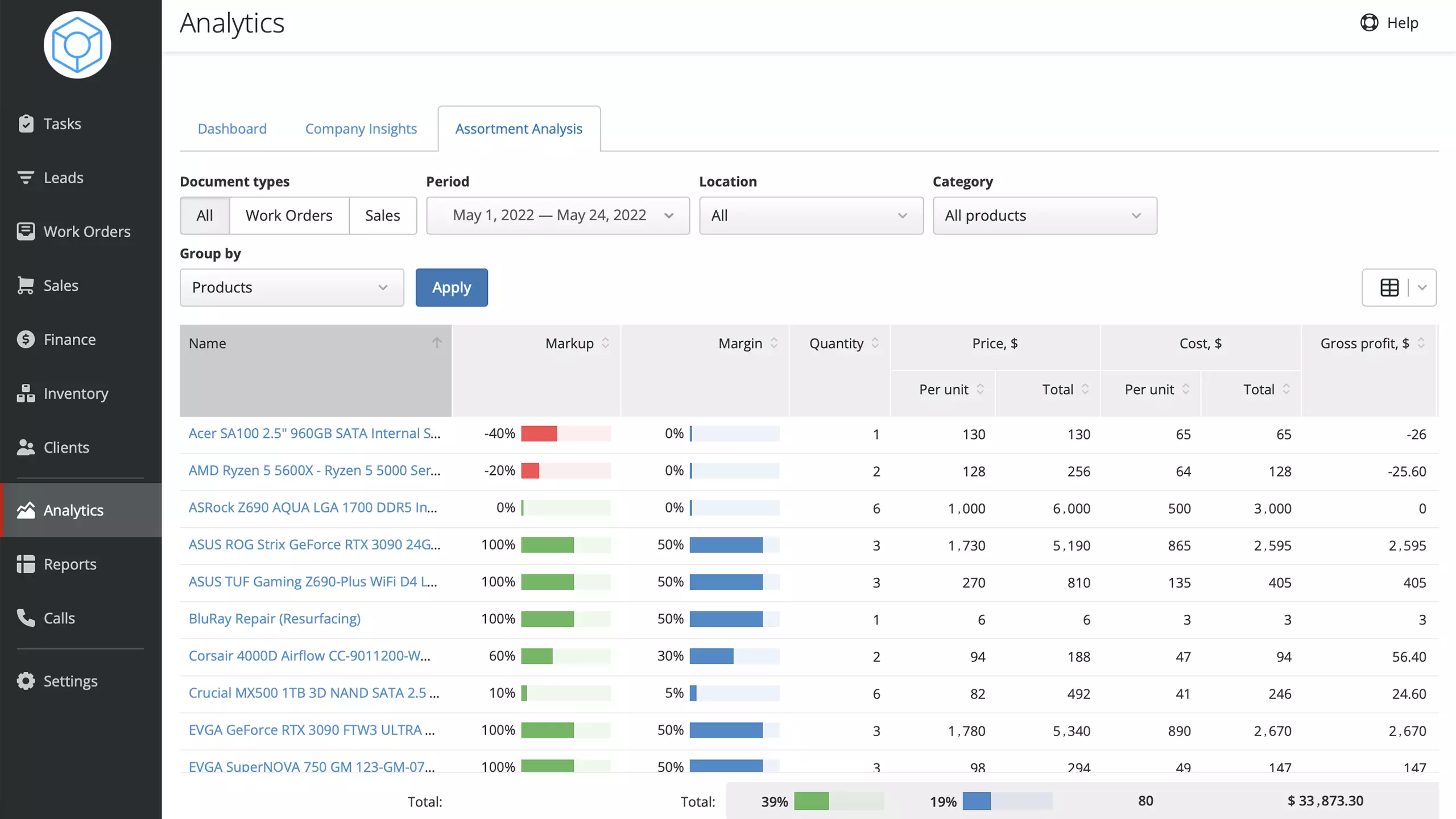 Assortment analysis in Orderry
Assortment analysis in Orderry
Orderry includes analytics and reporting tools
Orderry dashboard software provides visualized reports on inventory, work orders, employee effectiveness, and finances to help the company understand its operations easily. Analytics are available for company-wide and location-specific data with real-time updates and historical overviews.
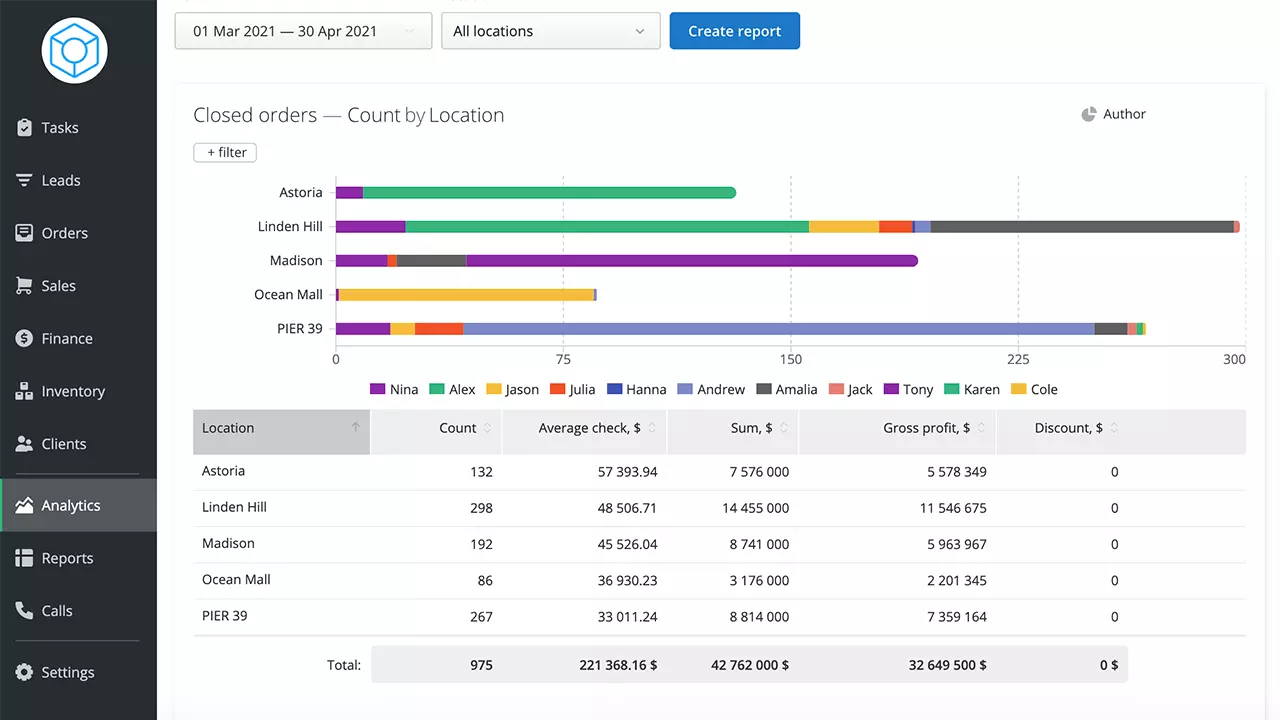 Company Insights in Orderry
Company Insights in Orderry
How to Recognize Poor Software Solutions
A bad work order management system is difficult to navigate, lacks customization options, and has poor integration with other tools. It may also have unreliable customer support, limited reporting capabilities, and be overly complex for the business's needs. Identifying poor software can save you time, money, and frustration in the long run. Here are some tips on how to recognize such solutions:
- Lack of User-Friendliness. Poor software typically has a complex and confusing interface, making it difficult for users to navigate and use its features effectively. If your team members constantly struggle to use the system or require frequent training to perform basic tasks, it may be a sign of a poor solution.
- Limited Customization Options. The best work order software should be flexible and customizable to fit your business needs and processes. If the solution lacks customization options and forces you to adapt your workflow to fit its rigid structure, it may not be the right choice for your business.
- Poor Integration Capabilities. A business management solution that does not integrate well with other tools and software you use in your processes can lead to data silos, inefficiencies, and reduced productivity. Look for work order management solutions that seamlessly integrate with popular tools like messaging platforms and accounting software.
- Inadequate Customer Support. Reliable customer support is essential when issues arise, or you need assistance with configurations. Poor software often has limited customer support options, long response times, and unhelpful agents. Test the customer support service before purchasing to ensure you will receive the assistance you need when problems arise.
- Lack of Automation Capabilities. Automation is a key feature of modern repair shop management solutions, allowing businesses to streamline repetitive tasks, improve efficiency, and deliver personalized customer experiences. A solution that lacks automation capabilities or offers limited options may hinder your ability to scale your operations and meet customer expectations.
By recognizing these key signs of poor solutions, you can make an informed decision when selecting the best work order software for repair shops. Take the time to evaluate your needs, test multiple options, and gather feedback from your team to ensure you choose a solution that will truly benefit your business.



